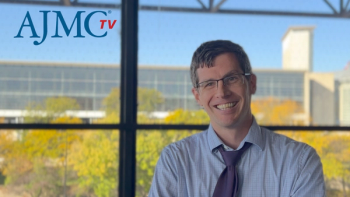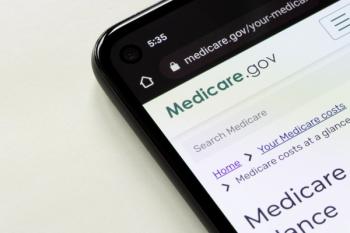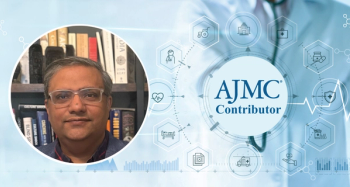
Social Determinants and Prevention With Population Health
Michael Thompson: One of the terms that I think we’re hearing a lot more of—not because it’s a new term, but I think people are trying to figure out how do we get at it, particularly through employers—is social determinants of health. What is the saying? Zip code predicts obesity rates better than diet. What are we doing? I know it’s a challenge for employers to get their hands around this, but how does it manifest itself in our population-health strategies?
Bruce Sherman, MD: A little bit of background is important to share, and that is that social determinants really have been the domain of public health representatives and not employers, who were the commercially insured populations. And as a result, health plans really haven’t looked at that. We’ve not, when we have evaluated claims data at the employer level. We’ve not looked at socioeconomic measures that may be associated with health until recently. And now there is a growing body of literature, and many more entities are looking at social determinants of health in commercially insured populations.
One of the things that emerges very clearly is that wage is certainly a strong influencer of healthcare utilization. It’s also, interestingly, a predictor of mental health illness prevalence with lower-income individuals having a higher prevalence of behavioral health conditions. Interestingly, low-wage status is also associated with higher risk of or higher prevalence of unhealthy lifestyle behaviors. Those are, in turn, associated with a number of chronic conditions. So we’ve not historically looked at the association of social determinants in subpopulations of employees in commercially insured groups. I think it’s now incumbent upon us to start to look more seriously at those populations and embrace tactics and strategies, as the 2 of you have with your benefit design, to make access to care more equitable.
Patricia Haines: It would be harder for us from a regional perspective since we like to say we have a pastor in every zip code. I don’t think it’s quite that dense, but there are no real pockets. In terms of community influence, I suspect—although we’ve not really looked at it—that for those pastors in rural areas versus those in more urban areas, there are differences there. Access to care is different. But I don’t think we’ve done anything specifically. We acknowledge pastors are low paid, but they’re highly educated, so that’s kind of a contrast right there.
Michael Thompson: Any thoughts on that, Andy?
Andrew Crighton, MD: No, I think it is seen. It’s seen in the average life span. In New Jersey, I was looking on-site. Just in the city of Newark, there are 4 wards. The wards differ in average life span by 18 years.
Patricia Haines: Oh my gosh.
Andrew Crighton, MD: One ward is high. I think it’s like 67 years is the average life span. Then you go outside Newark, and in areas it’s up to 91. So just the discrepancy in longevity and mortality, which translates into more healthcare and chronic health conditions.
Michael Thompson: Some of what we’ve seen is that as we talk about care navigators, we talk about health navigators, too, and getting more intimate with the individual. When those people get more intimate with those people, they’re hearing issues that aren’t just about what their diet is but also about some of those underlying issues. And so indirectly and on a more personalized basis, to your point before, they are actually understanding what some of those underlying issues are. And I think when we’re starting to think about total health, we need to look at the total person’s existence in that context and actually help them navigate. It ties into prevention because we haven’t talked a lot about prevention. Wellness is part of prevention. But what is the current state of thinking around prevention? Any thoughts?
Andrew Crighton, MD: I think in regard to primary prevention, it’s very important. Just the basics—smoking, activity, things like that—are helpful. I think, as you mentioned, when you get into disease and preventing the complications of that, these are things we’ve just pushed to the side all the time. And I think we need to bring that to the forefront. But along the lines of education of the patient or the healthcare consumer, we’ll call them and understand the importance of prevention and what it means to them. But then, what are their own thoughts, their bias, their cultural aspect in regard to this? That’s got to be factored in there.
I know that a lot of times, as you’re doing a treatment with someone, based on their background and their race, they may focus on the complications of the treatment versus somebody else who’s focused on the advantages of taking the treatment too. So take the time, have the time to understand as a provider the person in front of you. What will be their mind-set in following through and being compliant and walking through that? But that takes time, and that takes a relationship, not a transaction. Many times we’re dealing Medicare as a transaction.
Bruce Sherman, MD: Agreed. I think we’re talking around a central point here, and that is that individuals may have personal priorities that are very different from what we think they should be. And Mike, I think this gets back to the theme of patient-centeredness, where if we don’t understand an individual’s personal priorities and we make a recommendation for a particular treatment or care, we may be completely missing the mark when it comes to what’s important to that individual and whether that even is going to resonate for them. So if you have a low-wage earner who’s maybe working 2 jobs, a single mother who has high cholesterol, and we say to her, “You really need to do a better job managing your cholesterol,” that’s not her priority.
Andrew Crighton, MD: No.
Bruce Sherman, MD: And we have been trained as physicians. Back in the day, at least for me, that wasn’t part of the discussion.
Andrew Crighton, MD: No.
Bruce Sherman, MD: And it now needs to be, and I think that’s what you’re very much alluding to.
Patricia Haines: People are motivated so differently. You can lead a horse, if we had the trigger to what motivates certain people to do certain things at certain times in their lives. Some need a heart attack. They need an episode to motivate a change. Others are willing and open. I think I’d love to have that answer.
Newsletter
Stay ahead of policy, cost, and value—subscribe to AJMC for expert insights at the intersection of clinical care and health economics.















































